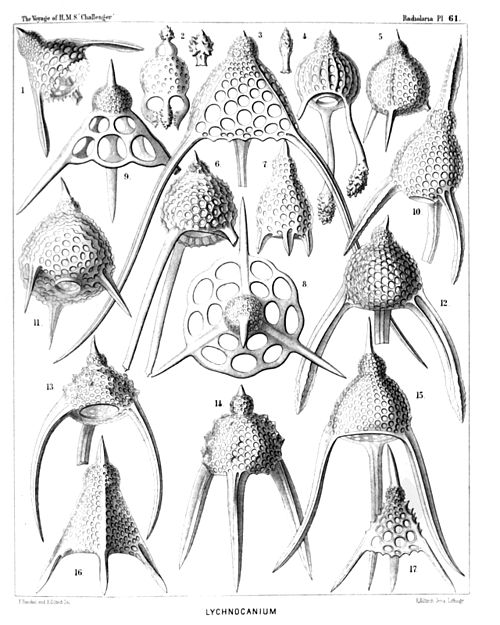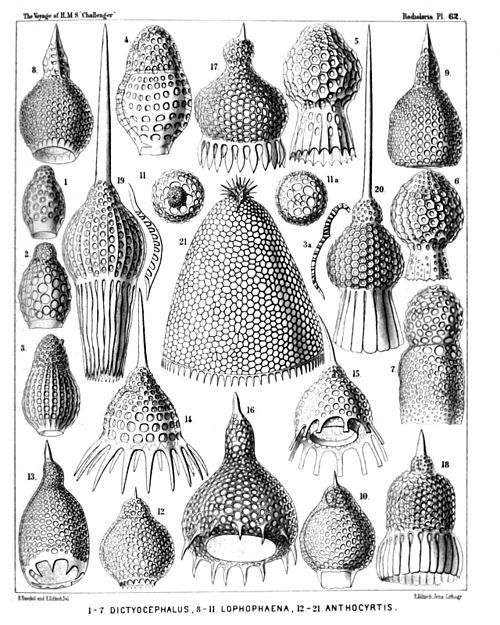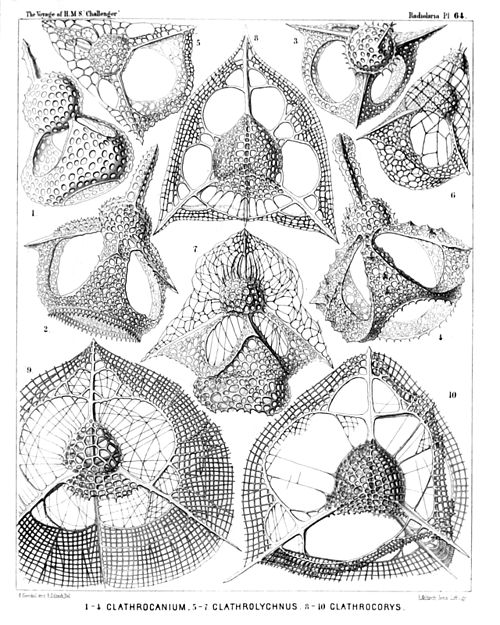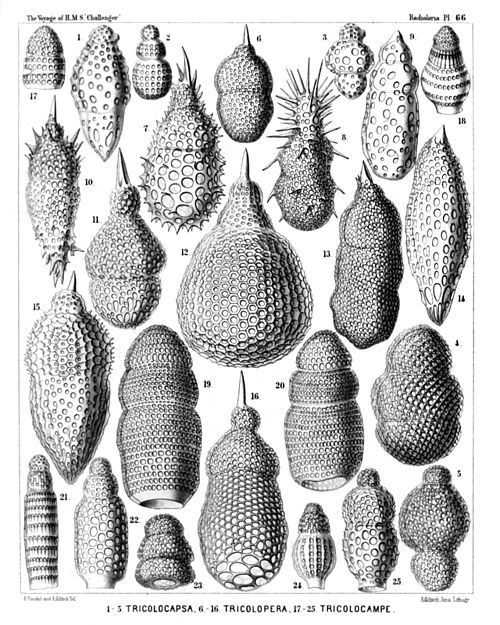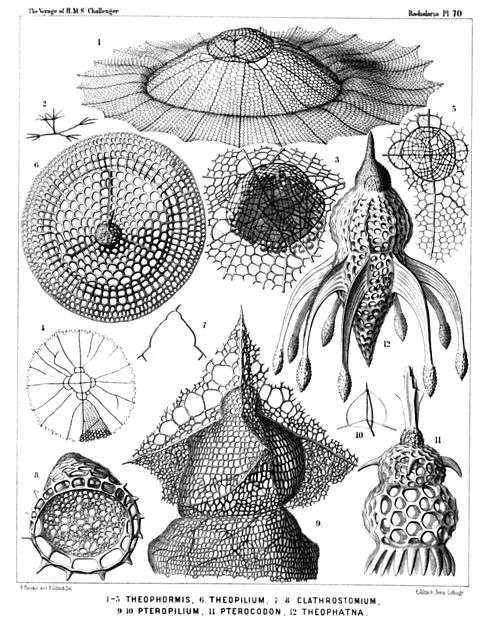PLATE 61.
Legion NASSELLARIA.
Order CYRTOIDEA.
Family Tripocyrtida.
|
|||||||||||||||||||||||||||||||||||||||||||||||||||||||||||||||||||||||||||||||||||
PLATE 62.
Legion NASSELLARIA.
Order CYRTOIDEA.
Families Anthocyrtida, Sethocyrtida et Phormocyrtida.
|
||||||||||||||||||||||||||||||||||||||||||||||||||||||||||||||||||||||||||||||||||||||||||||||||||||||||
PLATE 63.
Legion NASSELLARIA.
Order CYRTOIDEA.
Family Tripocyrtida.
|
|||||||||||||||||||||||||||||||||||||||||||||||||||||
PLATE 64.
Legion NASSELLARIA.
Order CYRTOIDEA.
Families Tripocyrtida et Podocyrtida.
|
|||||||||||||||||||||||||||||||||||||||||||||||||||||
PLATE 65.
Legion NASSELLARIA.
Order CYRTOIDEA.
Family Phormocyrtida.
|
||||||||||||||||||||||||||||||||||
PLATE 66.
Legion NASSELLARIA.
Order CYRTOIDEA.
Family Theocyrtida.
|
|||||||||||||||||||||||||||||||||||||||||||||||||||||||||||||||||||||||||||||||||||||||||||||||||||||||||||||||||
PLATE 67.
Legion NASSELLARIA.
Order CYRTOIDEA.
Family Podocyrtida.
|
|||||||||||||||||||||||||||||||||||||||||||||||||||||||||||||||||||||||||||||
PLATE 68.
Legion NASSELLARIA.
Order CYRTOIDEA.
Families Podocyrtida, Phormocyrtida et Theocyrtida.
|
||||||||||||||||||||||||||||||||||||||||||||||||||||||||||||||||||||||||||||||
PLATE 69.
Legion NASSELLARIA.
Order CYRTOIDEA.
Families Phormocyrtida et Theocyrtida.
|
|||||||||||||||||||||||||||||||||||||||||||||||||||||||||||||||||||||||||||||
PLATE 70.
Legion NASSELLARIA.
Order CYRTOIDEA.
Families Anthocyrtida, Podocyrtida, Phormocyrtida et Theocyrtida.
|
||||||||||||||||||||||||||||||||||||||||||||||||||||||||||||||||||||
